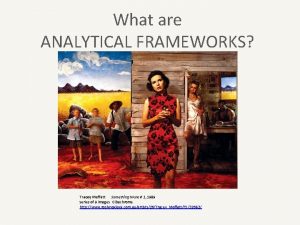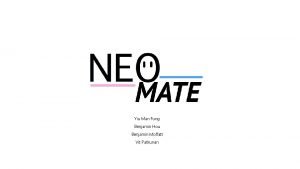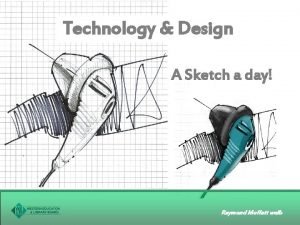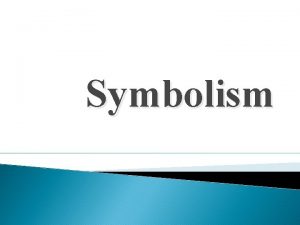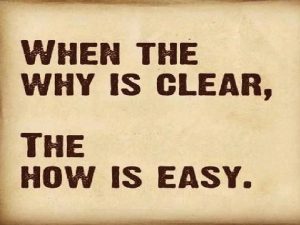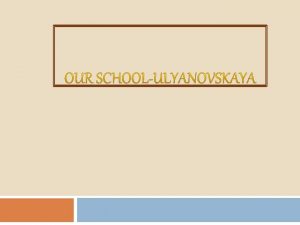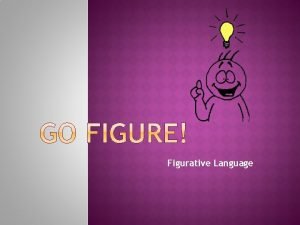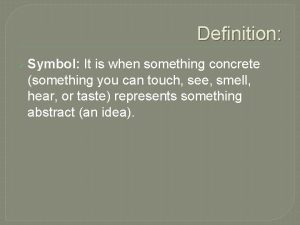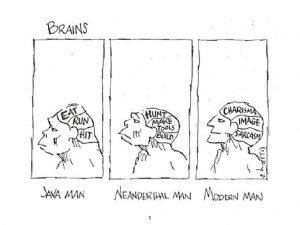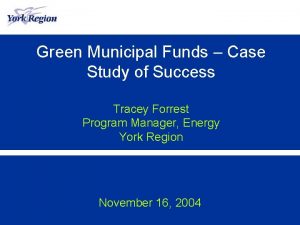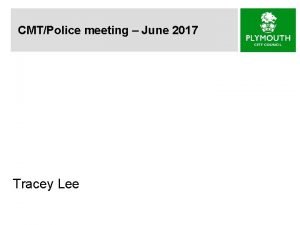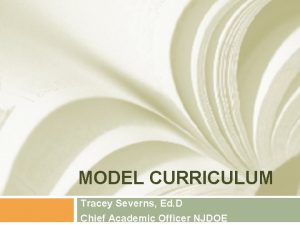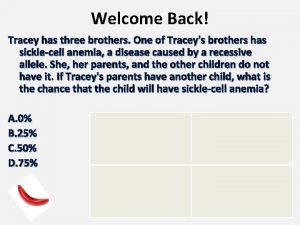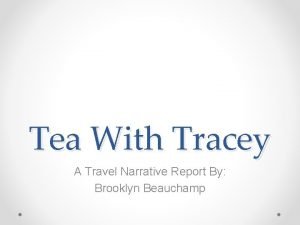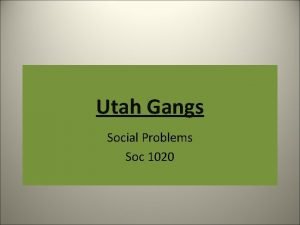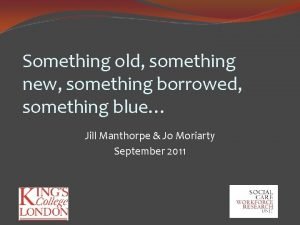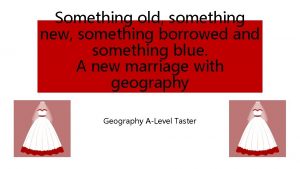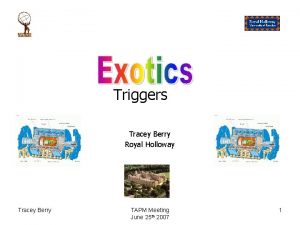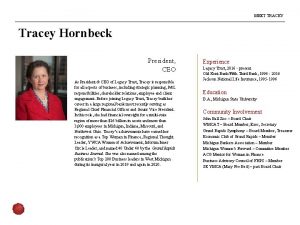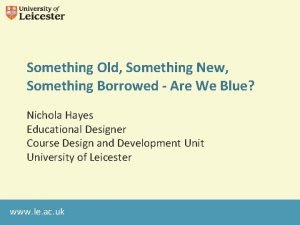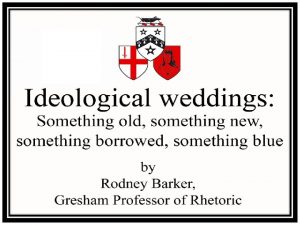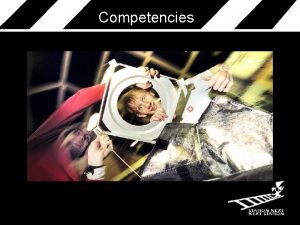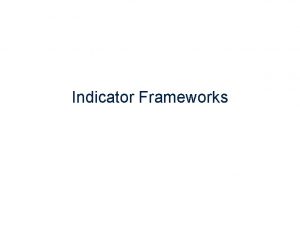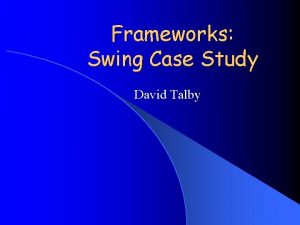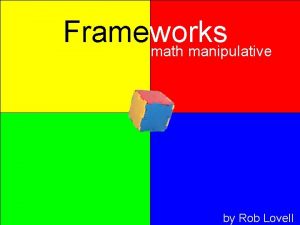What are ANALYTICAL FRAMEWORKS Tracey Moffatt Something More






























- Slides: 30

What are ANALYTICAL FRAMEWORKS? Tracey Moffatt Something More # 1, 1989 series of 9 images Cibachrome http: //www. roslynoxley 9. com. au/artists/26/Tracey_Moffatt/75/32682/

The Analytical Frameworks are structures that allow students to interpret the meanings and messages of artworks from various points of view

When the Analytical Frameworks are applied collectively, students learn to appreciate how an artwork may contain a number of different aspects and layers of meaning

Throughout Units 1 – 4, students develop an understanding of the Analytical Frameworks through the research of historical and contemporary artists from a variety of cultures

There are 4 Analytical Frameworks 1. 2. 3. 4. Formal Framework Personal Framework Cultural Framework Contemporary Framework

In Units 1 and 2 Art, students will study the Personal, Formal and Cultural Frameworks In Units 3 and 4, the Contemporary Framework is added

PERSONAL FRAMEWORK The Personal Framework is used to interpret how an artist’s experiences, feelings, thinking and/or personal philosophy can be reflected in an artwork It can also be used to gain awareness of the effect of a viewers personal background and experience on their own interpretation of an artwork

Consider the following: What relationship does the artwork have to the artist’s life and experiences? What visual evidence supports this? Has the artist used a specific process or practice in creating the artwork that may reflect a personal philosophy or ideas?

Rone Pain and Guilt 2011 Street Art http: //r-o-n-e. com/artwork/

Darren Sylvester What Happens Will Happen #1, 2010 lightjet print 90 x 120 cm http: //www. aboriginalartstore. com. au/artists/angelo-burgoyne-judda/goanna-dreaming-3/

How is the artwork linked to people, places or experiences of personal significance to the artist such as: • Personal feelings • Way of thinking • Aspirations, • Beliefs, • Memories, • Dreams etc.

How does the experience and background of the viewer affect the interpretation of an artwork? What are the symbols or metaphors explored or used in the artwork?

Salvador Dali The Persistence of Memory 1931 Oil on Canvas MOMA, New York, USA http: //www. moma. org/learn/moma_learning/1168 -2

FORMAL FRAMEWORK The Formal Framework involves assessing the use of the Elements and Principles of Art Also to be considered is the distinctive artistic style and materials and techniques used by the artist. Students are required to think about how these contribute to the meanings and messages in the work In using the Formal Framework, students should consider the following questions:

Visual Analysis How have the formal elements and principles of composition, focal point, balance, line, texture, shape, form, scale, colour, tone etc. , been applied by the artist and to what effect? How do these qualities contribute to the meanings and messages of the work?

Piet Mondrian Composition with Red, Yellow and Blue 1937 – 1942 Oil on Canvas Tate Gallery, UK http: //www. tate. org. uk/artworks/mondrian-composition-with-yellow-blue-and-red-t 00648

Technique What materials and techniques have been used? How do the materials or technical skills used shape or affect interpretation?

Wendy Mc. Dougall Paul Kelly 2010 photograph Melbourne, Victoria http: //www. portrait. gov. au/site/exhibition_subsite_paulkelly. php

Style What are the distinctive stylistic qualities of the artwork and how do they contribute to meaning? How does the artwork relate to other works in a similar style or from the same historical period or cultural background?

Barbara Kruger Belief+Doubt 2012 Installation, text printed vinyl Hirshhorn Museum and Sculpture Garden, Smithsonian Institute, Washington DC http: //www. hirshhorn. si. edu/collection/home/#collection=history-of-thehirshhorn&detail=http%3 A//www. hirshhorn. si. edu/bio/contact-the-hirshhorn/

Symbols and Metaphors How do aspects of the artwork contain symbolic meaning or use of metaphor? Angelo Burgoyne Judda Goanna Dreaming Acrylic on canvas http: //www. aboriginalartstore. com. au/artists/angeloburgoyne-judda/goanna-dreaming-3/

CULTURAL FRAMEWORK The Cultural Framework is used to identify influences on an artwork including the time, place, purpose and cultural and political settings in which it was made These influences may include historical, political, socio-economic and religious contexts as well as aspects of ethnicity and gender

Durer Self Portrait 1498 Prado Museum, Madrid, Spain https: //www. museodelprado. es/en/the-collection/in-depth-self-portrait-by-duerer-1498/

WHAT IS CULTURE? Culture exists in different ways in different societies It can be a learned behaviour – for example, a Japanese tea ceremony will be different to an Ethiopian coffee ceremony These behaviours will depend on where you come from and in what time frame you live

WAYS TO DEFINE CULTURE A particular civilisation at a certain point in time The artistic and social pursuits, expression and tastes valued by a society, class or group in manner, dress etc. The sum of inherited beliefs, attitudes, customs, activities and ideas that distinguishes one group of people from another Culture is transmitted through language, material objects, ritual, institutions and art, from one generation to the next

Max Beckman The Synagogue in Frankfurt Am Main 1919 Oil on canvas Stadel Museum, Frankfurt http: //www. staedelmuseum. de/en/collection/synagogue-frankfurt-am-main-1919

Products of culture are things like music, food, art and literature. Culture can be influenced by: family, social groups, war, peace, lifestyle, thoughts, opinions, attitudes, values, religion, health, ability, experiences, school, laws, customs, habits, politics, behaviours, dress, costume, hairstyle, sport etc.

Zhang Xiaogang A Big Family 1995 Oil on canvas Saatchi gallery – London Contemporary Art Gallery http: //www. saatchi-gallery. co. uk/artists/artpages/zhang_xiaogang_family. htm

Personal, Formal and Cultural Frameworks Personal Framework Mary Cassatt often used members of her family as models to depict the daily lives of women in the late 1800’s Formal Framework This image is closely cropped and uses shallow space to invite the audience into this personal event. Tonal modelling and the use of subtle colour is used to create a realistic look to the child’s skin. Pattern is a strong art element in this composition as shown by the wallpaper, the rug and the dress and this provides contrast between the various surfaces Cultural Framework The invention of the camera meant that candid scenes were often captured. Cassatt was also influenced by the Japanese prints that were on display in Paris in the 1890’s Mary Cassatt The Bath 1892

Formal and Cultural Frameworks Masami Teraoka Mc. Donald’s hamburgers Invading Japan/Flying Fries 1974 Formal Framework Teraoka works with watercolours as well as woodblock techniques which incorporate the use of traditional calligraphic lines and flat areas of colour Cultural Framework “My Mc. Donald's Hamburgers Invading Japan in the 1970's ……reflects my cultural heritage from Japan. The Ukiyo-e or wood block print tradition represents my cultural identity. The Geisha and Samurai images I use are a way to depict traditional-thinking Japanese people. ” Teraoka became interested in American culture and this can be seen in theme of this work, a humorous comment on fast food invading traditional Japanese culture
 Something more (tracey moffatt)
Something more (tracey moffatt) More more more i want more more more more we praise you
More more more i want more more more more we praise you Lirik lagu more more more we praise you
Lirik lagu more more more we praise you Mikael ferm
Mikael ferm Sharon moffatt
Sharon moffatt Liberty moffatt
Liberty moffatt Ben hou
Ben hou Raymond moffatt
Raymond moffatt A text tells how something works or why something happens
A text tells how something works or why something happens Symbol/symbolism definition
Symbol/symbolism definition Smart is something you become not something you are
Smart is something you become not something you are Something old something new poem
Something old something new poem The room is an oven figurative language
The room is an oven figurative language With symbolism, authors use concrete objects to represent
With symbolism, authors use concrete objects to represent What does concrete symbolize
What does concrete symbolize Something that describes something
Something that describes something Something more
Something more Tracey forrest
Tracey forrest Tracey lee plymouth
Tracey lee plymouth Tracey barnfield
Tracey barnfield Tracey werner
Tracey werner Tracey severns
Tracey severns Tracey brothers
Tracey brothers Tracey dempster
Tracey dempster Tracy hinds
Tracy hinds Tea with tracey
Tea with tracey Happy birthday tracey images
Happy birthday tracey images Site:slidetodoc.com
Site:slidetodoc.com Dr tracey doering
Dr tracey doering Tracey rowan eda
Tracey rowan eda Tracey wong
Tracey wong
